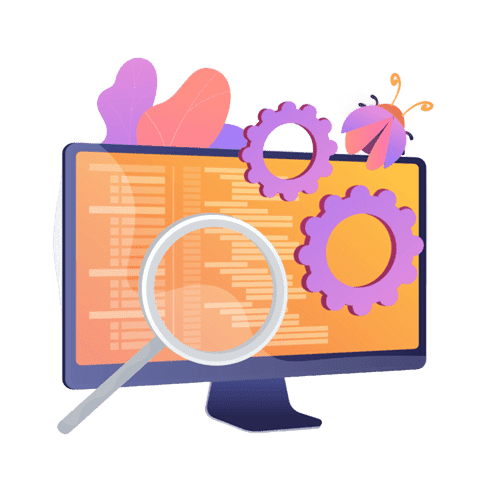Explore the impact of formal women’s networks in engineering, examining how internal and external networks empower female engineers, provide career support, and foster collective resistance against gender inequality in the profession. It draws on feminist theories of power and recent research findings.
Revolutionizing Automotive Testing with Evidence-Based Software Engineering
Discover how automotive software testing processes can be enhanced using Evidence-Based Software Engineering (EBSE). This approach identifies key challenges, integrates industry best practices, and leverages empirical evidence to improve testing efficiency, quality, and compliance. Learn actionable strategies to streamline testing, manage requirements, automate processes, and ensure high safety standards in automotive software development.

The automotive industry, known for its complex systems and high safety requirements, relies heavily on rigorous software testing processes to ensure the reliability and safety of its products. However, the traditional methods of software testing often face challenges related to process efficiency, test coverage, and adaptability to evolving requirements. This post delves into how Evidence-Based Software Engineering (EBSE) can be applied to automotive software testing to address these challenges, optimize the process, and enhance overall product quality.
EBSE is a methodology that integrates empirical evidence into software engineering practices, helping organizations make informed decisions about technology and process improvements. This approach is beneficial for industries like automotive, where safety, reliability, and compliance are critical.
Understanding Automotive Software Testing
Automotive software testing involves various test levels, including unit testing, integration testing, system testing, and acceptance testing. Each level aims to ensure that individual components, their interactions, and the system as a whole function correctly under specified conditions. The following are key characteristics that define automotive software testing:
1. Heterogeneous Subsystems
Modern vehicles integrate multiple subsystems, including multimedia, telematics, safety electronics, and powertrain controls. Each subsystem may use different development tools, methodologies, and standards, leading to diverse testing requirements.
2. Complex Interactions
With the increasing connectivity of automotive systems, ensuring seamless interaction among subsystems is crucial. This complexity requires comprehensive integration testing and real-time simulations.
3. High Configurability
Automotive software often needs to accommodate numerous configurations due to various model options, regional regulations, and customer-specific requirements. This variability makes comprehensive testing a challenging task.
4. Stringent Safety Standards
Automotive software must comply with safety standards such as ISO 26262, which dictate rigorous testing protocols to ensure functional safety.
%
Automotive software complexity
Automotive software complexity has increased by over 300% in the last decade, with modern cars containing more than 100 million lines of code, making thorough testing essential for safety and reliability. Source: McKinsey & Company, 2021
%
cost of software development
Up to 40% of the total cost of software development in the automotive industry is attributed to testing, emphasizing the critical need for efficient and optimized testing processes. Source: Capgemini, World Quality Report, 2020
Challenges in Automotive Software Testing
Based on the case study of a Swedish automotive company, several challenges in the automotive testing process were identified:
1. Lack of a Unified Test Process
Different projects within the organization used varying test methodologies and tools, leading to inconsistency in testing practices. This inconsistency can compromise the quality and comparability of test results.
2. Time and Cost Constraints
Limited resources often result in inadequate time allocated for thorough testing, leading to rushed testing phases that may overlook critical defects.
3. Requirements Volatility
Changes in requirements during the development cycle can lead to frequent test plan revisions, causing delays and potential gaps in test coverage.
4. Resource Constraints
A shortage of skilled testers and the unavailability of testing personnel can hinder the execution of effective testing strategies.
5. Knowledge Management
The lack of structured knowledge transfer mechanisms leads to inefficiencies, especially when new testers are onboarded or when experienced testers leave the project.
6. Test Automation Issues
Insufficient automation of test cases leads to rework and increased manual testing efforts, which are time-consuming and prone to human error.
Applying EBSE to Improve Automotive Testing Processes
To address these challenges, the EBSE process provides a structured approach to identify, evaluate, and implement evidence-based improvements. The following steps outline how EBSE can be applied to enhance automotive software testing:
1. Identifying the Need for Information
The first step involves conducting a thorough analysis of the current testing process to identify pain points, inefficiencies, and areas that need improvement. This can be achieved through case studies, interviews with stakeholders, and reviewing existing process documentation.
2. Systematic Literature Review
Once the challenges are identified, a systematic literature review (SLR) is conducted to gather evidence on potential solutions. The SLR focuses on finding empirical studies that offer insights into best practices, tools, and methodologies relevant to automotive software testing.
3. Critical Appraisal of Evidence
The collected evidence is critically appraised to assess its relevance, quality, and applicability to the specific context of the automotive testing process. This involves evaluating the effectiveness of proposed solutions in real-world settings, particularly within the automotive industry.
4. Implementing Improvements
Based on the appraised evidence, a value stream mapping approach is used to redesign the testing process. This involves mapping out the current state of the testing process, identifying value-adding activities, eliminating waste, and proposing a future state that incorporates the identified improvements.
5. Reflection and Continuous Improvement
The final step is to reflect on the effectiveness of the implemented changes and make adjustments as needed. This involves continuous monitoring of the testing process, collecting feedback from stakeholders, and updating practices based on new evidence.
Proposed Improvements for Automotive Testing
1. Adopting Unified Testing Standards
Establishing a standardized testing framework across projects can help achieve consistency and improve the quality of testing. Standards such as ISO 26262 provide guidelines for functional safety and can serve as a benchmark for developing organization-specific testing protocols.
2. Enhancing Test Automation
Investing in test automation tools and frameworks can reduce manual testing efforts, increase test coverage, and enable faster feedback cycles. Automated regression testing, in particular, can help ensure that new changes do not introduce defects into previously stable components.
3. Implementing Agile Practices
Incorporating agile methodologies can help address requirements volatility by enabling iterative development and testing. Agile practices such as continuous integration and regular stakeholder collaboration can improve communication, ensure timely identification of issues, and facilitate quicker responses to changes.
4. Improving Requirements Management
Clear and detailed requirements are crucial for effective testing. Techniques such as early simulations, use case modeling, and requirements traceability can help ensure that testing aligns with customer needs and regulatory requirements.
5. Fostering Knowledge Sharing
Establishing structured knowledge management practices, such as regular training sessions, workshops, and documentation, can enhance knowledge transfer among team members. This is particularly important for complex automotive systems that require specialized testing expertise.
6. Optimizing Resource Allocation
Implementing better resource management practices can ensure the availability of skilled testers when needed. This may involve cross-training team members, hiring dedicated testers, and using project management tools to track resource allocation.
7. Enhancing Defect Management
Introducing robust defect management tools and practices can help track and prioritize defects, ensuring that critical issues are addressed promptly. Early defect detection and efficient root cause analysis can reduce the cost and time associated with defect resolution.
Conclusion
The application of Evidence-Based Software Engineering to automotive testing processes offers a systematic and empirical approach to process improvement. By leveraging evidence from industry best practices and academic research, automotive companies can enhance their testing processes, improve product quality, and ensure compliance with safety standards. Continuous reflection and adaptation of the testing process are key to staying ahead in the dynamic automotive industry, where software complexity and safety requirements are ever-increasing.
Implementing the proposed improvements not only optimizes the testing process but also aligns it with the overall goals of the organization, ensuring the delivery of high-quality, reliable, and safe automotive software.
References
- Kasoju, A., Petersen, K., Mäntylä, M. V. (2013) – Analyzing an Automotive Testing Process with Evidence-Based Software Engineering. Information and Software Technology, 55, 1237-1259.
- McKinsey & Company (2021) – The Growing Complexity of Automotive Software: How to Stay Ahead.
- Capgemini, World Quality Report (2020) – Software Testing in the Automotive Industry: Ensuring Quality in a Software-Driven World.
- ISO 26262 (2018) – Road vehicles – Functional safety – International standard for ensuring the safety of automotive electronic systems.
- Grimm, K. (2003) – Software Technology in an Automotive Company – Major Challenges. International Conference on Software Engineering (ICSE).
- Kitchenham, B. (2004) – Procedures for Performing Systematic Reviews. Keele University Technical Report TR/SE-0401.
- Puschnig, T., Kolgari, S. (2009) – Competence Management in Automotive Software Testing. Automotive Testing Expo Europe.
Wanna know more? Let's dive in!
Mastermind Best Practices
Mastermind meetings offer business owners a collaborative space to share insights, solve challenges, and stay accountable. This guide explores best practices for successful mastermind groups, including clear goals, structured agendas, and fostering trust, ensuring participants gain valuable feedback, creative solutions, and long-term growth opportunities.
Five Relational Strategies for Mentoring
We explores five relational mentoring strategies, based on Relational Cultural Theory, to empower women professionals across industries. Emphasizing mutuality, authenticity, and connection, these strategies address power dynamics, foster growth, and build supportive networks, helping women navigate and thrive in their careers.
Coaching and Mentoring: Two Sides of the Same Coin?
Coaching and mentoring, while distinct in theory, often overlap in practice. Both aim to foster personal and professional growth. Context plays a key role in determining which approach is most effective, with organizations blending elements of both to meet diverse developmental needs.
The Professionalization of Mentoring Practices
Unlocking the full potential of mentoring means tackling some key issues head-on, like integrating the latest research, following best practices, understanding the dynamics of mentoring relationships, and aligning goals between mentors and mentees.
Holistic Mentoring Framework
The Holistic Mentoring Framework offers a holistic approach to mentoring, focusing on professional development, emotional well-being, and individualized support. By fostering trust and nonjudgmental relationships, it empowers early career professionals across industries to thrive, promoting continuous growth and addressing their unique challenges.
Best Practices in Mentoring: A Comprehensive Guide
Mentoring is like your personal growth hack. It’s all about connecting with someone who’s been there, done that, and leveling up together. It’s not just career tips – it’s real talk, learning, and support that helps you crush your goals.
ISO 9001 Gets a Glow-Up: Climate Edition
ISO 9001 Goes Green: The iconic quality management standard now includes climate action, pushing businesses to integrate eco-friendly practices. Get ready for a greener, cleaner approach to quality that’s all about saving the planet—one process at a time.
Understanding Organizational Constraints and Their Impact on Employee Engagement: A Comprehensive Overview
Explore how organizational constraints impact employee work engagement and why aligning team perceptions of these constraints is crucial for fostering a motivated and productive workforce. This article delves into the types of constraints, the role of perceptual congruence, and practical strategies for enhancing engagement in the workplace.
Fostering Innovation: How Learning-Oriented Leadership Transforms Project Team
Discover a new leadership model designed to enhance learning within project teams. This socio-cognitive approach emphasizes making mental models explicit, resolving conflicts, and creating supportive social structures, empowering leaders to foster innovation, improve project outcomes, and drive long-term success in today’s dynamic and fast-paced business environment.
The Evolution of SPICE A Comprehensive Journey Through Process Assessment Standardization
A groundbreaking initiative, SPICE (Software Process Improvement and Capability dEtermination) paved the way for standardized process assessments. This retrospective explores its journey from inception to global adoption, highlighting the development of ISO/IEC 15504 and its lasting impact on software engineering and other industries worldwide.
Understanding Project Success: Perspectives from Different Stakeholder Groups
Understanding and aligning different stakeholder perspectives is crucial for achieving project success. This study explores how varying interpretations of project success criteria among senior management, project teams, and recipients can lead to project failure. A multiple stakeholder model is proposed to enhance collaboration and reduce the risk of unsuccessful outcomes.











